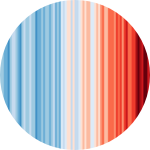About This Project
The WatAIR prototype to be developed/improved is a low-cost closed loop solution for removing CO2 from ambient air for use as algae feedstock. The WatAIR prototype is based around two reactors: CO2 capture and CO2 utilization.
In this design, ambient air is blown in to fluidize sorbent particles to selectively capture CO2. Once saturated, the sorbent is hydrated to release captured CO2 and output carbonated water for cultivating algae. The sorbent is then dried and the cycle repeats.
Ask the Scientists
Join The DiscussionWhat is the context of this research?
The Waterloo Algae Integrated Removal (WatAIR) direct air capture prototype development is part of a submission to the OpenAir Collective's yearly Carbon Removal Challenge, a worldwide challenge for students to create new processes, approaches and prototypes to remove carbon from the land, waters, or air. The WatAIR prototype has been a winner of the challenge in the Most Novel Approach category since the challenge began in 2022.
The WatAIR team is a part of the Engineers Without Borders University of Waterloo chapter and in accordance with the guiding principles of the organization, aims to develop a system that is both low-cost and open-source while also maintaining high standards for safety, scalability, and efficiency.
What is the significance of this project?
The WatAIR prototype implements a novel design in regards to moisture swing adsorption through several methods. The primary novelty is the application of a moisture swing sorbent in a fluidized bed column, where typical research uses packed bed columns or fixed-volume sorbent structures. The second is a novel pre-treatment method which, theoretically, would result in a greater ion exchange capacity for binding with CO2, increasing selectivity.
As well, part of the purpose of this prototype is to demonstrate the ability for carbon capture, utilization, and sequestration (CCUS) projects to be low-cost and open-access, contrary to current economic evaluations of CCUS projects in development.
What are the goals of the project?
In this next stage of development for the WatAIR prototype (May '24 - Mar '25), the goals are to (1) improve sensors in place to ensure accurate and consistent CO2 capture results, (2) trial different commercial sorbents and treatment methods to optimize CO2 capture efficiency, and (3) optimize the reactor design for minimized carbon impact of capture cycles.
Budget
Sorbent materials: Limited research exists on commercial moisture swing sorbents for CO2 capture. Trials will include varying sorbent type/preparation method for optimal performance.
Sensor development: Non-dispersive infrared (NDIR) CO2 sensors are unable to distinguish between water vapour and CO2. Developing an Arduino-based dCO2 meter allows for direct measurement of CO2 in output waters and developing an alternative to NDIR sensors allows for improved CO2 sensing in outlet air.
3D printing equipment: To reduce costs and improve open-source capability, the prototype will consist of 3D printed parts wherever possible. The team does not currently have consistent access to 3D printing services and intends to purchase a low-cost 3D printer for development as well as necessary printing materials.
Algae materials: Algae cultures will be used to evaluate the carbon utilization aspect of the prototype as well as to determine sorbent-contacted water's viability for biological growth.
Endorsed by
 Project Timeline
Project Timeline
Method of sharing results:
- Dissolved CO2 meter: results will be detailed in a summary report shortly after completion.
- Reactor, sensors, and sorbent design/improvement: updates provided through images and brief progress reports posted as lab notes.
- Full system results (March 1, 2025): a comprehensive report on the prototype will be submitted to the OpenAir Collective as well as posted here as a lab note or shared directly with interested backers.
Aug 19, 2024
Project Launched
Aug 31, 2024
Arduino-based dissolved CO2 meter
Sep 30, 2024
Sorbent purchase and pre-treatment
Sep 30, 2024
Reactor/system design optimization and construction
Oct 31, 2024
Investigation/development of improved CO2 in air sensors
Meet the Team
Team Bio
The OpenAir design team, a portfolio of the Engineers Without Borders University of Waterloo chapter, operates year-round in developing prototypes for the OpenAir Collective's Carbon Removal Challenge. The primary goals of the team are to develop a prototype that is both low-cost and open-source, aiming to minimize common barriers in the field of carbon removal. It is the belief of the team that this technology should be as accessible as possible without compromising effectiveness.
Robert Duff
Hello! My name is Robert Duff and I am currently completing my bachelor's degree in Chemical Engineering at the University of Waterloo. My research interests are in the field of carbon capture and sequestration with experience including marine carbon dioxide removal research at Ocean Networks Canada and photocatalytic CO2 conversion at the University of Waterloo.
I am currently the co-lead of the Engineers Without Borders UWaterloo Chapter's "OpenAir" design team whose focus is the development of a low-cost, open-source direct air carbon capture and utilization system.
Additional Information
Current limitations of the design and basis for goal #1: Currently, CO2 capture efficiency is determined through analysis of the outlet air from the column during fluidization using an Adafruit SCD40 non-dispersive infrared (NDIR) CO2 sensor. As the absorbance spectra of water vapour and CO2 are similar, peaks in humidity result in peaks in CO2 readings and introduces substantial error in determining saturation and CO2 capture capacity.
Project Backers
- 4Backers
- 113%Funded
- $2,270Total Donations
- $567.50Average Donation

